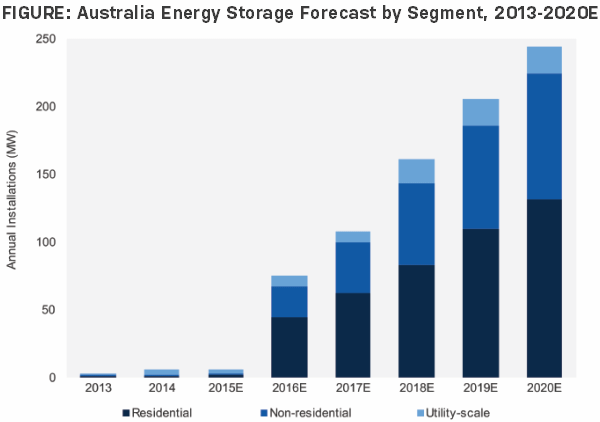
According to GTM Research’s report, “The Australian Energy Storage Market: Downstream Drivers and Opportunities” – Australia will jump from 1.9MW’s of energy storage capacity this year to 44MW’s in 2016. In addition, Australia will hit 244MW’s of annual installed capacity by 2020.
In dollar terms, GTM says that the energy storage market will have grown from $11.25 million (US$8m) in 2013 to $630 million (US$448m) in 2020. Much of this growth is accounted for by the residential market installing new solar and energy storage systems and by some of the 1.4 million solar households upgrading to add batteries to their existing systems.
“Residential customers with high retail electricity prices — many with oversized solar PV systems — will soon be jolted by paltry solar export tariffs that are slated to replace the expiring high feed-in tariffs,” says GTM Research. “By 2020, residential energy storage in Australia will be an annual 132-megawatt market.”

The commercial sector will also increase significantly – GTM predicts it will go from 1.4MW’s this year to 23MW’s in 2016. Together the residential and commercial sectors are expected to account for around 90% of the forecasted growth.
The cost of storage is following the way the solar panels did – with continually fallings costs. The Climate Council believes that ditching mains power and installing batteries could be cost competitive with staying connected to the grid by 2018.
“It could be a game changer allowing households to control their energy and energy bills,” said Climate Council CEO Amanda McKenzie.
